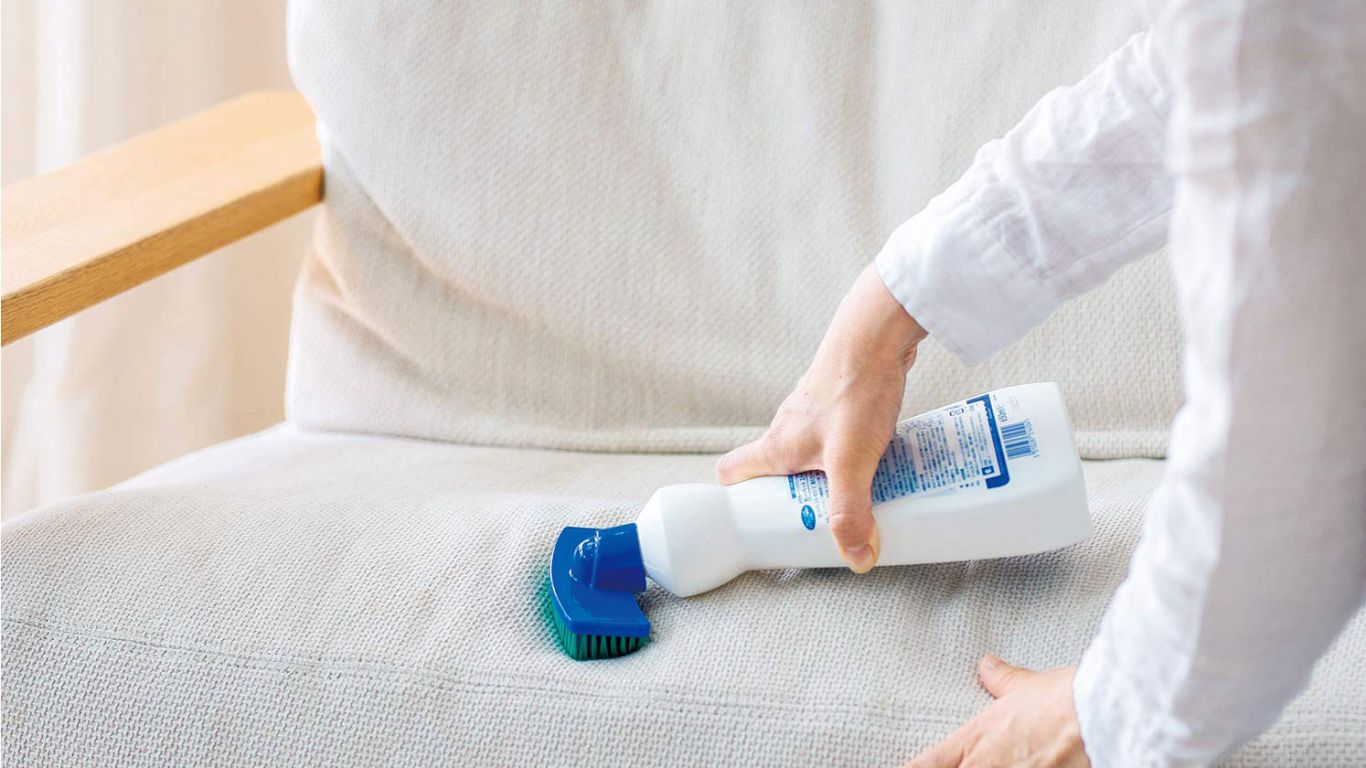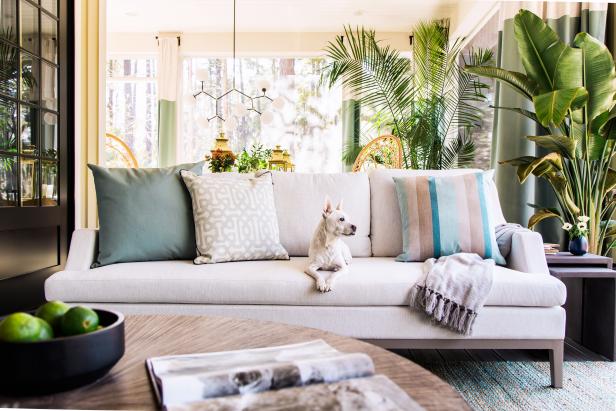Easy maintenance tips after a professional upholstery cleaning
Keep your home properly ventilated
Proper ventilation can help with odour control as upholstered furniture can easily absorb odours which even weakens the foam. Any initial signs of dampness can also be tackled effectively if the area is proper ventilated.
Avoid exposure to the elements and pollutants
Position your furniture such that the upholstery does not get damaged. Avoid extended periods of exposure to direct sunlight as well as close proximity to uncovered windows. Even rain water spray and any other airborne pollutants like fumes from cooking or smoke can harm the fabric and cause it to fade and even fray.
Use an upholstery protectant for your sofa
Using any protective product is one of the best ideas to prevent spills from penetrating deep down into the fibers and becoming stains. It basically serves as an invisible plastic sheet, making it easier to keep upholstered furniture clean and in pristine condition. Scotchgard is one such plasticising agent. It seeps into the fabric and prevents dirt and oils from working their ways into the sofa fibers and affecting it.
Cover your furniture
Use a sofa cover or a slipcover for protection and decoration. A piece of fabric draped over or tucked into a sofa will do the job. You can buy something new or use convert something you already have at home like a blanket, sheet or a tablecloth. The slipcover takes care of the sofa, arm rests and cushions and will absorb the brunt of daily use and dirt. Remember, you can change out or wash the slipcover as often as you want, and using different patterns or colours for different seasons or occasion is a fun way to change the look of the place.
Tackle any new spills or liquid-related mishaps immediately
Attend to any new stains as soon as you can with a clean cloth and use specialised cleaning products made for your upholstery fabric. Follow the special care instructions that can be found for the affected furniture. It will help reduce the long term effect of the stain or dirt build-up.

Best upholstery cleaner 2020: refresh fabric and remove stains
On the hunt for the very best upholstery cleaner? Even in households that don’t have pets or children, stains and spills are inevitable, and if you do have kids/pets, well, you’ll know all about (constant) upholstery cleaning and the importance of finding an effective product.
Here, we list the very best upholstery cleaners at the best prices for you to tackle the job at hand. Most are in spray form, but some are bars or use brush application for on the spot cleaning. Our recommendations come based on how effective they are at removing stains and cleaning the product they are intended for – some may only be suitable for certain fabric types and some are primarily designed for carpet but may be used for furniture too. Read the information on each, but remember to check any care instructions that came with your upholster before cleaning. We have more info on choosing the right upholstery cleaner at the end of this article, for those who need it.

How to Clean a Fabric Sofa
You need to review your manufacturer’s instructions:
Always, always check the manufacturer’s cleaning instructions before attempting to remove stains from your sofa or freshen up your couch. Failing to do so could void warranties or flat-out ruin your couch.
The tags can answer many cleaning questions:
If you can’t find the manufacturer’s instructions, don’t fret. There should be a tag on your sofa cushions that clues you in on important facts, such as whether the material is water soluble. Keep in mind that one side of the tag may address the cleaning of the sofa cover, while the other will provide information for washing the cushions themselves. Make sure you’re looking at the correct tag before you clean.
Properly reading a cleaning tag can save you a lot of grief:
Typically, you’ll find one of four letters on the cleaning tag of your sofa. Here’s what each means.
You should never deviate from the recommended cleaning methods on the tags:
Water may seem innocuous, but if you use it to clean a couch that specifically calls for a solvent-based cleaner and nothing else, you’re going to be in for an unpleasant surprise. Believe it or not, the water will actually leave a stain on your sofa. Don’t risk ruining your furniture. Stick to the tags. They know what’s best for your couch.

The Right Way to Clean a Couch, According to a Top Expert
Once your sofa is clean and dry, kill any lingering germs and odors on water-safe upholstery with a fabric sanitizing spray like Tide Antibacterial Fabric Spray.
Clean dingy arms and headrests with a portable extraction cleaner like Bissell’s Little Green ProHeat Portable Cleaner. Simply dispense the cleaner and water mixture through the hose, agitate the fabric with the brush nozzle, and vacuum up the dirt into the tank. For solvent-only fabrics, it’s best to call in a professional for a safe and thorough cleaning.
If your cushions have removable covers, unzip them and place a paper towel between the fabric and filling to absorb cleaner. Apply the cleaner to a cloth and blot the stain carefully, working from the outside in. Once the stain is removed, dab the area with another damp cloth to rinse thoroughly and blot dry. For “S” fabrics, remove stains with a solvent-based product according to package directions.
For fabrics that can safely be cleaned with water, treat food and pet stains with an enzyme-containing formula like Bissell Professional Pet Stain & Odor Remover. In a pinch, mix together mild dish soap with warm water. Always test any cleaner in a hidden area first.
With your vacuum’s upholstery attachment, go over the entire sofa: back, arms, skirt, and cushions. If the cushions are removable, take them off and vacuum the fabric underneath, going as far under the back and arms as your vacuum can reach. With the crevice tool, go along the seams, around any buttons, and along the trim.

DIY Tricks for Maintaining and Cleaning Upholstery
Vacuum and Dust Furniture – Often
Keep dust, dirt or crumbs on upholstery at bay by making it a habit to vacuum most fabric surfaces with an upholstery attachment. This helps to lift general crumbs and dirt that was transferred from the floor onto the fabric surface (thanks, socks). A quick vacuuming helps to keep the dirty stuff from becoming more embedded, and also helps to prevent it from becoming an agitator – like sandpaper – which can cause the areas you sit or place your feet show signs of wear faster than other areas.
Rotate Cushions
Flipping the base cushion(s) and rotating loose throw pillows or back pillows on a sofa will prevent uneven wear on the surface of the upholstery. If you always sit in the same spot, switching up the cushions will also help to prevent the foam or inserts used from developing the dreaded butt dent.
Clean Spills or Marks as Soon as Possible
Keep a bunch of clean, white absorbent cloths handy for spills. When a spill happens, the first course of action is to absorb, do not rub, especially colored liquids like juice or wine. When you’ve absorbed as much as possible (don’t stop trying until your white cloth is no longer picking up the color of the spill), spot treat the fabric. Most store-bought treatments will advise how you should continue to clean the spot after application to absorb additional pigments of the stain. Spot cleaner is good, but it may still take some elbow grease.
Invest in Fabric Cleaner (and Avoid Ordinary Multi-Surface Cleaners)
Mixed as a 50/50 ratio, it’s inexpensive and convenient to keep a spray bottle of white vinegar and water on hand for lifting light dirt and stains.
Apply a Fabric Protector
No professional skills are required to apply your own upholstery protector. Treating fabric early and then adhering to an upkeep routine is the best way to ensure that your upholstery will hold up to general wear and tear and clumsy spills. Products on the market are both inexpensive and simple to apply – sprays are most common. Always check manufacturer guidelines because some products may be damaging to silks or velvet materials, and when in doubt, test on a hidden surface.